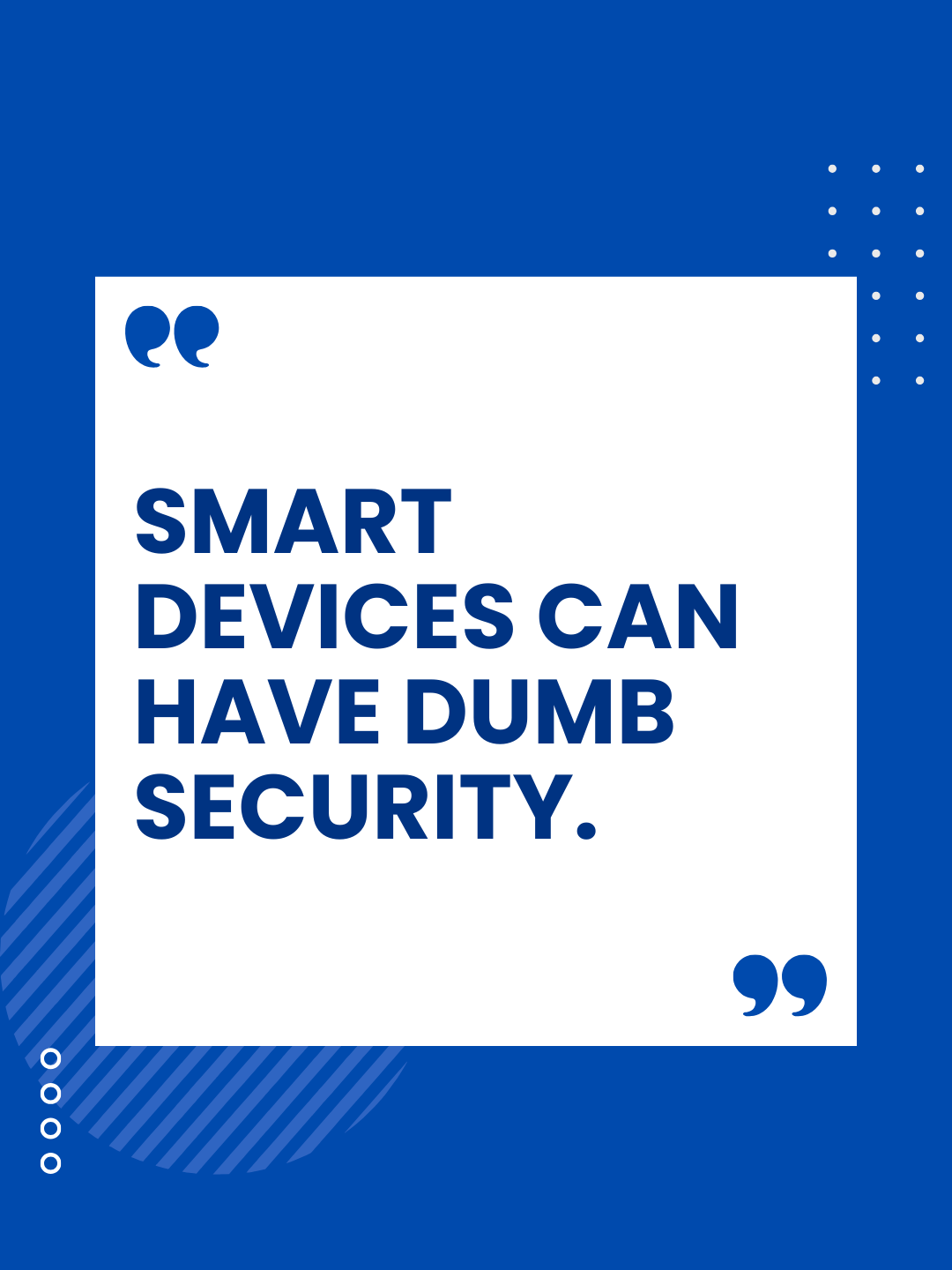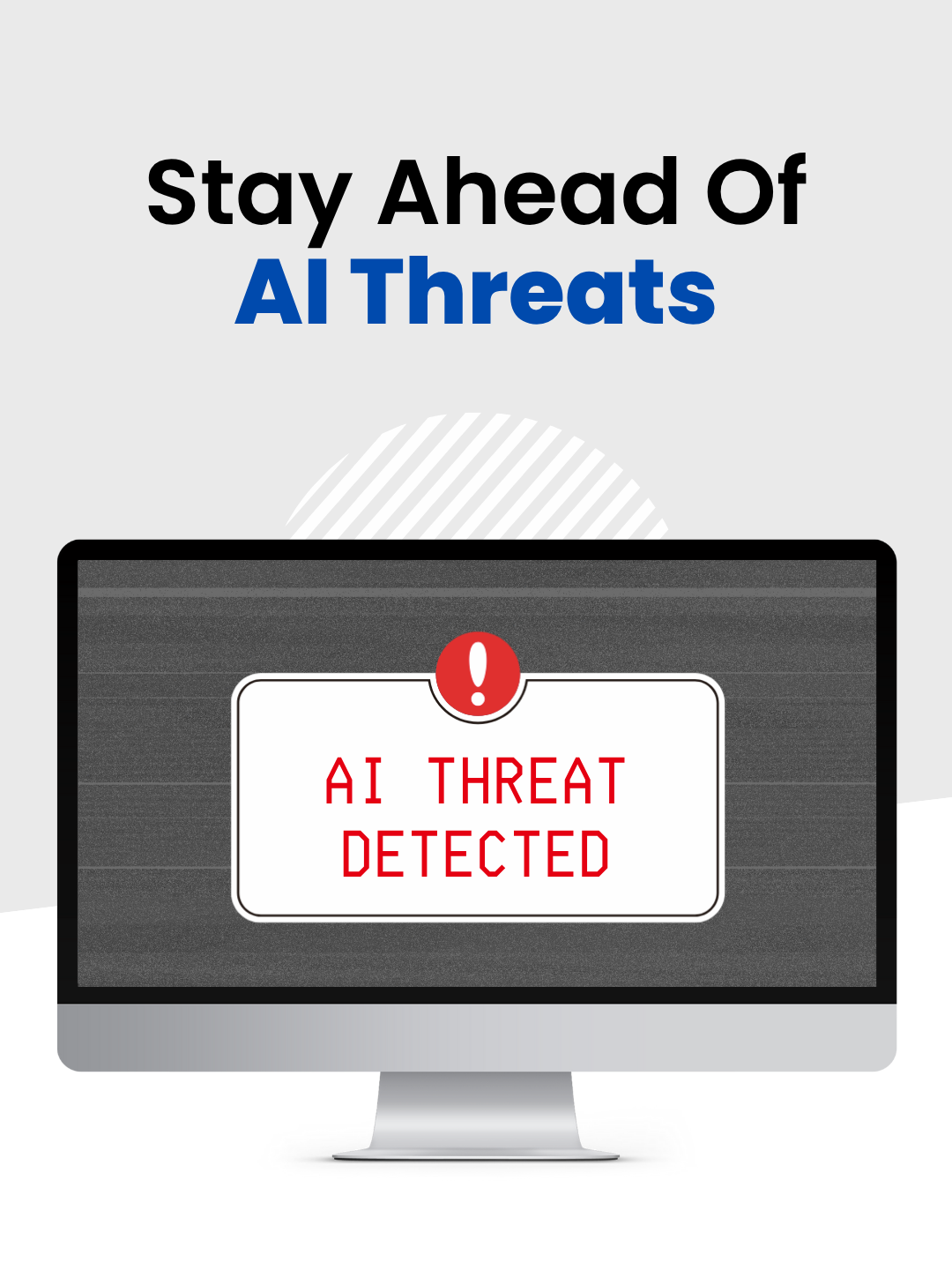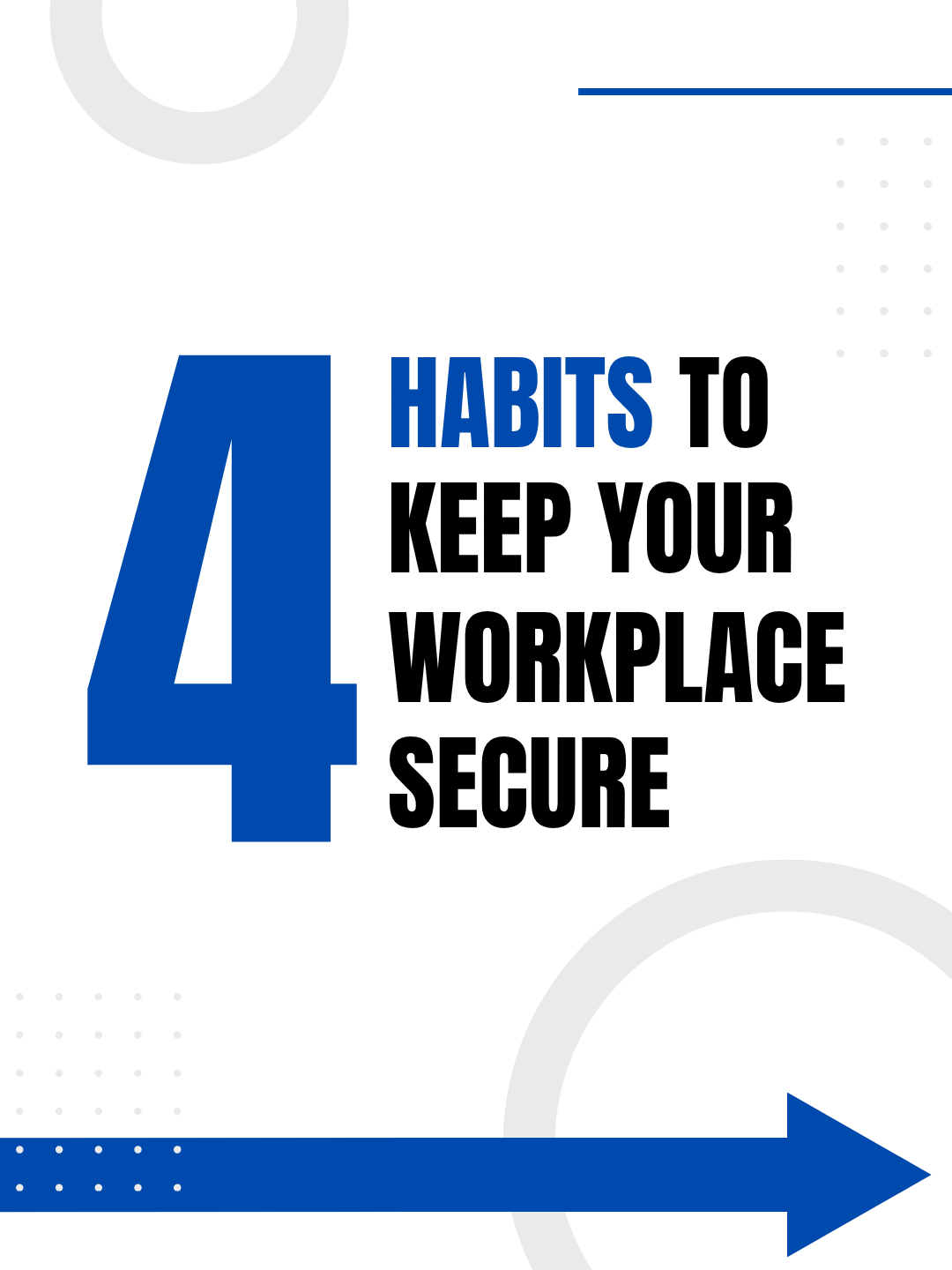
WHAT IS THE REAL COST OF A CYBERSECURITY BREACH?
The normal response would be that it is the loss of data and money. While those are the immediate tangible things that are lost, the real costs are the loss of reputation and trust with your customers, vendors, employees, and prospective customers; and potentially your entire business.
According to the National Cyber Security Alliance, 60% of small companies go out of business within six months of a cyberattack or data breach. The average recovery cost for a small business is $690,000, and for a mid-size company that jumps to $1 million.
In 2021 61% of small to mid-size businesses experienced an attack. Some of those businesses may not know for months that they were even infiltrated. Around 4000 business fall prey every day. Small and mid-size businesses feel secure in their anonymity, but are usually easy targets. Hackers know that it is a big payoff for little work. Enterprise companies invest heavily in their security, so they target smaller companies more frequently.
They can generally find networks that are easy to penetrate such as firewalls that are not appropriately configured, critical data (Bank accounts, customer data, Tax documents, employee data, etc.) stored without extra layers of protection, unsecured devices connected to the company network (printers, phones, cameras, thermostats), guests having Wi-Fi access to the company network, former employees not being removed properly from the system, and no password management plan. All these vulnerabilities are fixable by a competent IT staff.
Properly done, cybersecurity takes some monetary investment from business owners, but without it, every day is a gamble, and one your company may not survive.
To break down the numbers: In 2021, there were 32.5 million Small Businesses. 19.5 million suffered a cyberattack. 11.7 million went out of business as a result. (Cybersecurity Ventures) 25% were human error (Threatpost) 279 is the average amount of days until remediation 50% of small businesses took at least 24 hours to resume operation with more than 8 hours of downtime. (Cisco) According to Corvus Insurance, 47% of small businesses do not have a cybersecurity budget, and 42% do not have a response plan (Corvus Insurance) Almost 60% (wrongly) believe they can resolve a cybersecurity attack without a plan or process. (CNBC)
Like this article? Share it!
The Best IT Support in Houston TX!
Check out our reviews to find out why!
Check out our TESTIMONIALS PAGE and you'll see we are the best choice for your IT Managed Services. We have the highest ratings in Houston Area for IT Services & Managed Services. Book a free consultation to find out how we can secure your business for you! IT Managed Services in Houston, Texas
READ MORE OF OUR ARTICLES!

In 2020, a family in Mississippi woke up to a parent’s worst nightmare. Their eight-year-old daughter heard a man’s voice coming from her bedroom—but it wasn’t her father. A hacker had accessed their Ring camera and was speaking to her through the device, taunting her and playing music until her parents rushed in to unplug it. Ring later confirmed the problem: the family reused a password that had already been exposed in a data breach. Stories like this are unsettling, but they’re not rare. Smart cameras—and smart devices in general—are hugely popular for both homes and small businesses. For many Houston businesses, they’re an affordable way to monitor entry points, manage inventory spaces, watch the front desk, or check in after hours. But while these devices offer convenience and peace of mind, they can also introduce serious cybersecurity risks if they aren’t set up and secured correctly. Why Smart Cameras Can Put Your Business at Risk Not all cameras are designed with security in mind. Many budget-friendly options cut corners, skipping essential safeguards like encryption, secure cloud storage, or regular firmware updates. Even established brands can leave you exposed if default settings are never changed. Cybercriminals look for: • Default usernames and passwords • Outdated firmware • Unsecured WiFi networks • Unpatched security gaps • Cameras connected to the same network as business systems Once a hacker gets into a vulnerable camera, they may be able to view footage, steal data, or move deeper into the network. For a small business, this could lead to far more than a privacy violation—it could expose client information, financial records, employee data, or business-critical systems. Choosing the Right Camera Matters If you’re purchasing a new camera or evaluating the ones you already own, pay attention to features that actually protect your business. Look for devices that offer: • Regular and transparent security updates • Encrypted video streams • Multi-factor authentication for logins • The option for local storage (not cloud-only) • Strong manufacturer security practices Reputable brands are worth the investment. In cybersecurity, the cheapest option usually ends up being the most expensive mistake. Setup Mistakes That Put Businesses at Risk Choosing a secure device is only half the equation. How you configure it matters just as much. To protect your Houston business: 1. Change default usernames and passwords immediately. Cybercriminals maintain lists of default logins for thousands of camera models. If you don’t change them, they already know your password. 2. Keep firmware and apps updated. Outdated devices are one of the biggest security risks we see in small business environments. Enable automatic updates whenever possible. 3. Segment your network. Your smart cameras should never sit on the same network as: • Office computers • Payroll and accounting systems • Client data • Cloud apps • POS or payment systems Network segmentation is a core cybersecurity practice we implement for Houston businesses—it prevents a hacked device from becoming an entry point into everything else. 4. Secure your router. Strong WiFi encryption, a strong admin password, and updated firmware are essential. Your router is the real “front door” to your network. Cameras Aren’t the Only Devices to Worry About Smart doorbells, thermostats, locks, and voice assistants also connect to your network. If they’re not secured properly, they can become back doors for attackers. The more “smart” devices your business uses, the more important it becomes to have professional cybersecurity oversight. Smart Devices Can Make Your Business Safer—If They’re Set Up Securely Smart cameras and IoT devices can absolutely help protect your workplace. They just need to be configured with security in mind from the start. A few proactive steps now can prevent your cameras from becoming easy wins for hackers—and protect your business from costly breaches, downtime, and data loss. Not Sure Whether Your Smart Devices Are Secure? Quinn Technology Solutions helps Houston businesses review, secure, and harden their devices before attackers find the weaknesses. 👉 Schedule your free discovery call: https://go.appointmentcore.com/guest/book/PvREBR We’ll review your setup, identify risks, and make sure your smart cameras and connected devices are helping your business—not putting it at risk.

Scammers don’t take holidays off — in fact, they look forward to them. When emotions run high and giving increases, fraudsters ramp up their efforts. And every year, fake fundraisers spread across social media, e-mail and crowdfunding sites, tricking people and small businesses into donating to causes that aren’t real. A few years ago, a massive telefunding ring was shut down after investigators uncovered more than 1.3 billion deceptive donation calls and over $110 million stolen from donors. (Federal Trade Commission) Researchers at Cornell University found that more than 800 accounts on major platforms operate active donation scams at any given time, pushing people toward fake fundraisers on Facebook, Instagram and X. For Houston businesses, even one mistaken donation can do more than waste money. It can tie your company’s name to fraud, weaken trust with clients and partners, and create cybersecurity exposure if the scam is linked to phishing or malicious links. Here’s how to check whether a fundraiser is legitimate, recognize red flags and keep your business (and goodwill) protected this season. How To Vet A Fundraiser Before You Donate A legitimate fundraiser should clearly and confidently explain: • Who is organizing it, and what is their connection to the person or cause? • How the money will be used and within what timeline. • Who controls the withdrawals and whether there is a secure, direct path for funds to reach the recipient. • Whether close family or friends publicly support or validate the campaign. If any of this is unclear or avoided, ask questions. Silence or vague answers are a major warning sign. Red Flags That Often Signal Scams Take a step back if you notice: • Misleading, conflicting or obviously false details on the fundraiser page • Money not being used for the stated purpose • Impersonation of another person or copying someone else’s tragedy • Stories that seem overly perfect, dramatic or emotionally manipulative If multiple warning signs show up, report the fundraiser and do not donate. Vetting Charities (Not Just Crowdfunds) Even established charities can have questionable practices. Look for: • Transparent program descriptions, financial breakdowns and annual reports • Clear information about what percentage of donations reaches programs • Charity names that appear in searches alongside words like “fraud,” “scam,” or “complaints” If information is hard to find or reviews seem concerning, proceed carefully. Common Tactics Charity Scammers Use Watch for these red flags — many of which overlap with the cybersecurity scams we see every day in Houston: • Demands for gift cards, wire transfers or cryptocurrency • Websites missing https (secure data transmission) • Pressure to donate immediately • Claims that you already pledged or donated when you didn’t Scammers are getting better at making things look real. Even polished websites, friendly messages and professional-looking graphics can hide bad intentions. Why This Is Important For Your Business When a company donates — whether publicly or quietly — that act of generosity becomes part of your brand identity. Falling for a fake fundraiser can damage credibility, especially if the scam also includes malware, phishing links or attempts to gather employee information. The same tactics that appear in charity scams often show up in invoice fraud, fake payment requests and impersonation scams that target businesses. Training your team to spot fraudulent fundraisers also teaches them to catch other common cyberthreats. How To Protect Your Business (And Your Goodwill) These best practices help keep your charitable giving safe: 1. Donation Policy For Your Business: Establish how the company donates and what approvals are required. 2. Employee Awareness: Teach your team how to recognize fake fundraisers and verify requests before donating under the company name. 3. Use Trusted Channels: Donate directly on verified charity websites, not through random links shared by e-mail or social media. 4. Transparency: If your business publicly supports a cause, make sure you’ve verified the organization first. 5. Ongoing Monitoring: After donating, confirm the funds were used as promised — many charities publish impact updates. Keep Your Holidays Generous – Not Risky The holidays are a time to give — not a time to regret a rushed or unsafe donation. A few smart checks protect your business, your money and your reputation. Want your Houston team trained to spot fake fundraisers, phishing attempts or suspicious payment requests? We can help strengthen your cybersecurity awareness and keep your business safe. 👉 Book your free discovery call here Because the strongest gift you can give your business (and your community) is protection from scams designed to take advantage of your generosity.

AI is evolving at lightning speed — and while that’s great for business innovation, it’s also giving cybercriminals a dangerous new toolbox. Deepfakes, AI-powered phishing, and fake “AI tools” loaded with malware are becoming everyday threats. So let’s shine a light on the AI-driven risks businesses should be paying attention to. Doppelgängers in Your Video Meetings — Deepfakes Are Getting Harder to Spot AI-generated deepfakes have reached a point where they’re almost indistinguishable from real people. Attackers are using them to manipulate employees, impersonate executives, and gain access to internal systems. One security firm recently reported a case where a cryptocurrency employee joined a Zoom meeting with “executives” who appeared legitimate — but the entire room was made up of deepfakes. They tricked the employee into installing a malicious Zoom extension that granted microphone access, opening the door for a North Korean intrusion. These incidents are rewriting the playbook for social engineering. Businesses should train staff to look for subtle clues: awkward facial movements, inconsistent lighting, unnatural pauses, or anything that feels “off." AI-Enhanced Phishing — Smarter, Faster, and Much Harder to Recognize Phishing emails used to be easy to pick out: misspelled words, strange formatting, and broken English were dead giveaways. Not anymore. Attackers now use AI to write polished, professional emails that mimic real communication styles. Some are even translating messages into multiple languages to expand their reach. AI-driven phishing kits also allow hackers to quickly clone webpages or adjust scams based on current events. Despite the new tricks, many security fundamentals still apply. Multifactor authentication (MFA), strong password policies, and frequent cybersecurity awareness training remain some of the most effective defenses. Employees should be taught to spot urgency cues, unexpected attachments, or login requests — even when the email looks perfect. Fake AI Tools — Malicious Software Disguised as “Helpful” AI Cybercriminals are capitalizing on the hype around AI by creating fake AI apps, video generators, and “productivity tools” that are actually malware delivery systems. These fake AI tools often include just enough functionality to feel legitimate, which makes them incredibly deceptive. Under the hood, they’re packed with malicious code designed to steal credentials, install ransomware, or take remote control of devices. For example, researchers uncovered a TikTok account promoting cracked “AI software” and sharing activation bypass tricks for popular tools like ChatGPT. In reality, the entire channel was a front for a malware distribution campaign. The takeaway? Before downloading any new AI tool — even if it’s trending — run it by your MSP or IT security partner first. Vetting unfamiliar software is one of the easiest ways to prevent a breach. Ready to Kick AI Threats Out of Your Business? AI-powered cyberattacks are only getting more sophisticated. From deepfake impersonations to AI-crafted phishing emails and malicious AI apps, attackers are leveling up — but with the right cybersecurity strategies, your business can stay ahead of the curve. If you want clarity, confidence, and a plan to protect your organization from AI-driven risks, we’re here to help. Looking for a Trusted Houston IT Company? Quinn Technology Solutions provides Houston businesses with reliable IT support, managed services, and cybersecurity built to handle today’s AI-powered threats. Whether you’re a growing company or an established operation, whether you have an IT person or team or not, we help you stay protected, productive, and prepared for whatever comes next. Let’s build a safer, smarter IT environment for your team. Get in touch today and see why Houston businesses trust Quinn Tech to handle their technology. Schedule your free discovery call today , and let’s talk about how to secure your business before a small threat turns into a major incident.

Today, we pause to honor the men and women who have served our country — and those who continue to serve — with courage, dedication, and sacrifice. Your willingness to step forward, to protect, to persevere, and to uphold the freedoms we rely on every day is something we do not take for granted. To our Veteran clients, colleagues, partners, family members, and friends — thank you from all of us at Quinn Technology Solutions.

Think your business is safe from cyberattacks? Think again. Most data breaches don’t come from elite hackers breaking through sophisticated systems — they start with everyday habits. Clicking on a suspicious link, reusing weak passwords, or skipping software updates can open the door to a costly cyber incident. During Cybersecurity Awareness Month in October, organizations were reminded that strong protection starts with simple, everyday habits that safeguard data and reduce risk. In this post, we’ll explore 4 essential cybersecurity habits every organization should build to protect sensitive data, strengthen team awareness, and reduce risk. ⸻ 1. Strengthen Password Practices Weak or reused passwords are still one of the biggest vulnerabilities in any business. Encourage your team to: • Use strong, unique passwords for every account. • Switch to a password manager to securely store credentials. • Avoid sharing passwords or writing them down. Even simple changes, like updating passwords regularly and using longer passphrases, make it significantly harder for cybercriminals to gain access. 2. Enable Multifactor Authentication (MFA) Adding an extra step during login can drastically reduce unauthorized access. MFA requires a second verification factor (like a code sent to a phone or an authentication app) to confirm a user’s identity. It may seem like a small inconvenience, but MFA can stop the majority of credential-based attacks before they start. 3. Keep Systems Updated and Test Your Backups Cybercriminals often exploit outdated software and unpatched systems. Make it a habit to: • Regularly update operating systems, browsers, and apps. • Enable automatic updates whenever possible. • Test your backups before you actually need them. Even something as simple as restoring one critical file can confirm whether your backup process really works — and save your business from downtime if disaster strikes. 4. Build a Culture of Security At the end of the day, technology alone isn’t enough — your people are your first line of defense. Creating a security-first culture means weaving good cyber habits into everyday work. Here’s how to make that happen: • Encourage employees to use strong passwords or password managers. • Require multifactor authentication (MFA) on all accounts that support it. • Recognize and reward team members who report phishing attempts. When cybersecurity becomes a shared responsibility, awareness improves across the entire organization — and staying secure becomes second nature. Security Is Everyone’s Job Cybersecurity Awareness Month is a powerful reminder that protecting your business goes beyond software and firewalls. It’s about people, communication, and consistent habits. By focusing on culture, compliance, and continuity, you’re not just avoiding threats — you’re building a workplace that values digital safety every single day. Ready to Put These Habits Into Action? There’s no better time than now to evaluate your company’s defenses. Train your employees to recognize suspicious activity, identify risks, and practice proactive security steps. Don’t wait until an attack forces your hand — take the first step today. 👉 [Schedule a free discovery call today] and let our experts help you build a cyber-smart culture that keeps your business secure year-round.

Holding onto old computers and outdated software might feel like you’re saving money — but in reality, it can cost your business far more in lost productivity, cybersecurity risks, and downtime. Legacy technology slows your team down, creates daily frustration, and opens the door to cyberattacks. Upgrading your tech isn’t just about staying current — it’s about protecting your business, your budget, and your growth. Why Outdated Technology Is Costing You More Than You Think Old systems don’t just work slower — they make your entire team slower. As computers age, boot times increase, apps crash more often, and everyday tasks take twice as long. Worse, outdated systems are more likely to fail completely, causing unexpected downtime and missed deadlines. There’s also a major security risk. Unsupported software and old devices don’t receive security patches anymore, leaving your business vulnerable to cyberattacks, ransomware, and data breaches. Compliance audits can also become a problem when you’re operating on retired platforms like Windows 10. How to Know It’s Time to Update Your Tech Here are five clear signs your business is overdue for a technology refresh: 1. You’re Still Using Windows 10 or Older Systems Microsoft will stop supporting Windows 10 in October 2025, meaning no more security patches or updates. Continuing to use it past the end-of-life date exposes your business to hacking attempts and compliance violations. If your team is still on Windows 10, now is the time to start planning a smooth transition to Windows 11. 2. You Keep Calling IT for the Same Problems If your team is dealing with slow computers, system crashes, or repeated technical issues, it’s not just annoying — it’s a sign your hardware is failing. Constant repairs and IT support requests eat away at productivity and your budget. 3. Your Software Doesn’t Work With Modern Tools Legacy software can’t always integrate with modern apps, cloud services, or mobile platforms. When your tools don’t work together, your workflow becomes inefficient and your ability to scale is limited. 4. Your Devices Are Slowing Down Your Workflow If computers take forever to start up, freeze during video calls, or crash during tasks, your business is losing valuable work time. Devices older than three to five years should be evaluated for performance, especially if they’re impacting your team’s ability to get work done. 5. Your Security Tools Are Outdated An outdated firewall or antivirus system leaves your business exposed. Cyberthreats evolve quickly, and if your systems aren’t updated regularly, you’re at higher risk of data breaches and ransomware. Older systems are often the first target for cybercriminals. Worried Upgrading Will Be Too Expensive? Here’s the Truth Upgrading doesn’t always mean a full system overhaul or massive investment. In fact, keeping outdated tech often costs more in: • Lost employee productivity • Security breaches and data loss • Emergency repairs and downtime The good news? There are affordable upgrade options that can be planned in phases to fit your budget. You Don’t Have to Handle IT Upgrades Alone If you’re not sure where to start, our team can help you evaluate your current systems and build a cost-effective upgrade plan. We also monitor your technology and alert you when updates or security patches are overdue. 📞 Book a FREE Discovery Call to get started. We’ll walk you through your next steps to keep your business secure, efficient, and ahead of the curve. Click here to schedule a call!

When it comes to protecting your business, there are plenty of myths floating around about cybersecurity. Unfortunately, these misconceptions can leave massive gaps in your company’s defenses. Believing them can cost you more than just downtime — it can cost money, reputation, and customer trust. Below are five of the most common cybersecurity myths and the real truth behind them. Myth #1: “We’re Too Small. Hackers Won’t Bother Us.” A lot of small and mid-sized businesses think they’re flying under the radar. The reality? Cybercriminals often target SMBs (Small and Medium-sized Businesses) on purpose because they know resources are limited, making defenses weaker. Cyberattacks affect organizations of every size, across industries, and in every part of the world. In fact, more than 80% of businesses are hit. The financial toll is staggering — global damages from cybercrime are projected to hit $9.5 trillion. For a large enterprise, recovery is difficult but possible. For a small business, one ransomware attack could mean shutting down for good. The lesson is simple: assume your business is a target — because it is. Myth #2: “If It Worked Before, It Will Still Work.” Cybersecurity is not a “set it and forget it” practice. Just because your company hasn’t experienced a breach in the past doesn’t mean you’re immune in the future. Technology evolves quickly — and so do cyber threats. The digital threat landscape is constantly shifting. Hackers adapt their methods daily. If you’re not keeping pace, you’re falling behind. Effective cybersecurity requires a cycle of constant anticipation, adjustment, and action. Myth #3: “Once You’re Secure, You Stay Secure.” Nothing about business or technology stands still. Every time you hire new staff, connect a new device, or install new software, your systems change. Each change creates potential new entry points for cybercriminals. This is why continuous monitoring and proactive security management are essential. Cybersecurity isn’t a one-time investment — it’s an ongoing, holistic process that protects you against an ever-expanding attack surface. Myth #4: “Security Slows Down Business.” Many leaders still believe that security controls create unnecessary friction — slowing down projects, adding red tape, and raising costs. That may have been true years ago, but it doesn’t reflect today’s best practices. In reality, security and business optimization go hand in hand. Strong security helps minimize waste, reduce downtime, and build predictable, scalable systems. Instead of being a barrier, modern cybersecurity is a driver of efficiency and business performance. Myth #5: “A Strong Password Is All You Need.” Yes, long and complex passwords are important. But relying on them alone is one of the biggest mistakes a business can make. Each account and device should have a unique password. Reusing the same one means if a hacker cracks it once, they can access everything. That’s why we recommend a password manager to keep them secure. Even better? Multi-Factor Authentication (MFA). Adding an extra step, like a text code or authentication app, can double your security. It takes seconds, but it makes a massive difference. And remember — passwords don’t protect against phishing, ransomware, or many other threats. Comprehensive cybersecurity means more than just credentials. Ready to Strengthen Your Business Security? Don’t let these myths leave your company exposed. Cybersecurity isn’t just about defense — it’s about protecting your future, your team, and your customers. If you’re looking for an MSP (Managed Service Provider) you can trust, we’d love to help. Schedule your FREE Discovery Call today, and together we’ll map out the best next steps to secure your business. 👉 Book Your Call Here

When it comes to cybersecurity, it’s often the small, everyday steps that make the biggest difference. The latest research shows that 82% of breaches involve data stored in the cloud—and the majority could have been prevented with basic safeguards. This is where cyber hygiene comes in. Think of it as your company’s version of daily handwashing. It may not be glamorous, but it’s absolutely essential. Without it, you’re leaving your business exposed to unnecessary risk. Here are four foundational cyber hygiene practices every small and mid-sized business should put in place today: 1. Lock Down Your Network Your network is the front door to your business. If it’s not secured, everything inside is vulnerable. • Use firewalls and strong encryption to protect sensitive data. • Hide your WiFi network (SSID) and protect it with a unique, complex password. • Make sure your router itself is password-protected. • For remote workers, require a VPN (virtual private network) to connect securely from outside the office. These simple steps make it significantly harder for attackers to gain easy access. 2. Train Employees to Be Cyber-Smart Human error is still the #1 cause of security breaches. That means training your team is one of the most effective defenses you have. Your training program should cover: • Creating and managing strong passwords • Recognizing phishing attempts and suspicious emails • Using multifactor authentication (MFA) wherever possible • Safe browsing and data handling policies When employees know how to spot risks, they’re far less likely to accidentally open the door to an attack. 3. Back Up Data — And Test It Even with great security, incidents can still happen. That’s why backups are your lifeline. • Back up all critical files regularly, including financial data, HR records, customer information, and databases. • Store backups securely in the cloud or in an offsite server. • Automate backups when possible — and test them to ensure they actually work. If ransomware or a crash takes down your system, having verified backups could be the difference between recovery and permanent loss. 4. Limit Data Access Not everyone in your company needs access to everything. In fact, restricting access is one of the easiest ways to protect sensitive information. • Give employees access only to the systems and data required for their jobs. • Remove access immediately during offboarding. • Restrict administrative privileges to trusted IT personnel only. By minimizing exposure, you reduce the chance that a stolen password or insider threat can cause widespread damage. Why Cyber Hygiene Is Worth the Effort Yes, implementing these measures takes planning and consistency. But the reality is this: the cost and disruption of a breach is far greater than the effort to prevent one. Investing a little time each week into cyber hygiene helps protect your data, your reputation, and your bottom line. Ready to Strengthen Your Defenses? If you’re not sure where your business stands, now’s the time to find out. At Quinn Technology Solutions, we offer a free Cybersecurity Risk Assessment that identifies hidden vulnerabilities, exposes gaps in your defenses, and provides you with a clear action plan to stay protected. 👉 Schedule your assessment today Your future self — and your business — will thank you.

As of October 14, 2025, Microsoft will officially end support for Windows 10. While your computer will continue to function after that date, it will no longer receive critical security updates, patches, or technical assistance. That means the system you rely on daily could quickly become vulnerable to cyberattacks, viruses, and other threats. For many individuals and businesses, this is more than just an inconvenience—it’s a serious security risk. Outdated software creates an easy entry point for hackers and can cause major problems if you handle sensitive data. Compliance requirements, too, often demand that organizations stay current on operating systems to avoid penalties. Whether you’re a small business owner or simply someone who wants to keep their personal information secure, it’s essential to understand what this change means for you and what steps you should take next. Let’s break it down. Why Does This Matter? When Microsoft stops updating Windows 10, your device becomes more vulnerable. Without regular patches, the system cannot defend itself against newly discovered malware, ransomware, or viruses. Businesses that handle client or financial data especially risk breaches if they continue using outdated technology. Another challenge is software compatibility. Developers frequently update programs to match the latest operating systems. Once Windows 10 is phased out, you may find your favorite tools, apps, or software no longer run smoothly—or stop working entirely. Lastly, compliance is a critical concern. Industries such as healthcare, finance, and law often require up-to-date systems to meet regulations. Running an unsupported operating system could lead to costly fines or legal complications if you fail to meet security standards. What Are Your Options? If your device meets Microsoft’s requirements, the recommended step is upgrading to Windows 11. But not all Windows 10 computers are compatible with the newer software. If your PC doesn’t qualify, you have several choices: Buy a new Windows 11–compatible computer. This guarantees security and long-term support. Sign up for Extended Security Updates (ESU) . Microsoft will offer a short-term option for a fee—or free if you use OneDrive Backup—but this is only a temporary solution. Switch to a different operating system, like Linux. This may be a bigger adjustment but is an option for tech-savvy users. Ignore the change. This is the riskiest choice and not recommended, as it exposes your device to significant threats. Regardless of the route you choose, make sure to back up all your important files before making any changes. Cloud backups or external hard drives can protect you from data loss during the transition. Extended Security Updates (ESU) For those not ready to fully upgrade, Microsoft is offering Extended Security Updates for one year after the end date. This comes with a cost—$30 or 1,000 Microsoft Reward points—or for free if you activate Windows Backup with OneDrive. However, the free option comes with limited storage (5 GB), and you may need to purchase more if you store large amounts of data. Keep in mind, ESU is not a permanent fix. It buys you some extra time but should be seen as a bridge to a long-term solution like Windows 11 or a new device. The key is not to wait until after the October 14 deadline—sign up early to stay protected. Conclusion The end of Windows 10 support is a turning point for many users and businesses. While the system will still “work,” the lack of security updates and compatibility patches makes it increasingly unsafe to rely on. Planning ahead now can save you from bigger headaches later. Whether you choose to upgrade to Windows 11, invest in new hardware, or temporarily use Extended Security Updates, taking action before October 14 is crucial. Think of it as an investment in both your digital security and peace of mind. If you’re uncertain which path is right for you, working with an IT partner is the best step. Our team can evaluate your current systems, guide you through the transition, and minimize downtime. 👉 Schedule a FREE 10-Minute Discovery Call today, and we’ll map out the best options for upgrading before the Windows 10 deadline.

